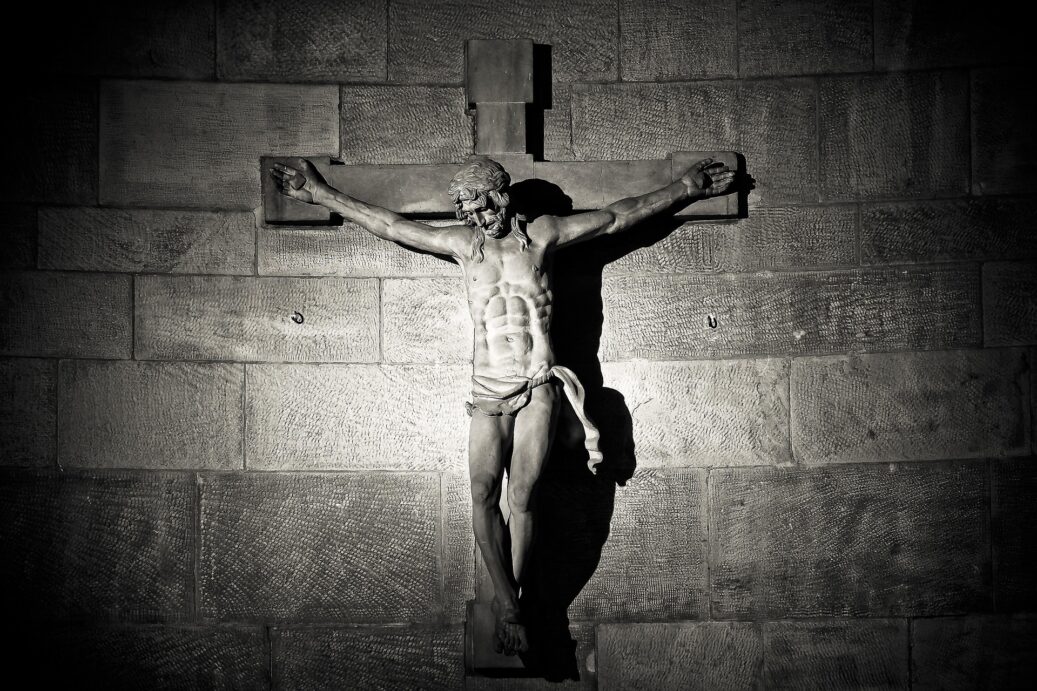The ancient classical gods of Greece and Rome were majestic and powerful, to be sure.
They were also petty and small-minded, using human beings as pawns in their endless feuds and jealousies with one another.
But they were high and mighty, untouchable, and often actually pretty unknowable—unless you made them angry, in which case they were very good at making their fury known and venting their rage at you.
When Jesus arrived on earth, right in the middle of a time and culture with a broad worldview that embraced these sorts of gods, He came to show us who the one God truly is.
The apostle John wrote, “No one has ever seen God, but the one and only Son, who is Himself God and is in closest relationship with the Father, has made Him known” (John 1:18).
Jesus came to make the invisible God visible to the world in flesh-and-blood form (Colossians 1:15). He came to personally reveal to us exactly who God is (Hebrews 1:1-3).
“No one has ever seen God, but the one and only Son, who is Himself God and is in closest relationship with the Father, has made Him known” (John 1:18).
But fascinatingly, Jesus also came to earth to suffer.
The prophecies about the Messiah said that He would live a life of pain and sorrow for the sake of others (Isaiah 53:1-12).
Nowhere is this clearer than in His suffering at the Cross.
It seems unthinkable. What sort of God would willingly go through such a horrific thing?
The God of Scripture is portrayed as majestic, powerful, high, and mighty—just like the other gods of history previously mentioned.
But our God then does something very different:
He lowers Himself from the heights, and humbles Himself amongst His own Creation, and lives a life of loving and sacrificial service to others, and then willingly turns Himself over into the hands of sinful men to be mocked, beaten, and humiliated, culminating in His agonizing death on the Cross (Philippians 2:1-11).
Moreover, He still bears the signs of His suffering, even today.
Consider this passage of John’s Gospel after the resurrection:
“Now Thomas (also known as Didymus), one of the Twelve, was not with the disciples when Jesus came. So the other disciples told him, ‘We have seen the Lord!’
“But he said to them, ‘Unless I see the nail marks in his hands and put my finger where the nails were, and put my hand into his side, I will not believe.’
“A week later his disciples were in the house again, and Thomas was with them. Though the doors were locked, Jesus came and stood among them and said, ‘Peace be with you!’ Then he said to Thomas, ‘Put your finger here; see my hands. Reach out your hand and put it into my side. Stop doubting and believe.’
“Thomas said to him, ‘My Lord and my God!’
“Then Jesus told him, ‘Because you have seen me, you have believed; blessed are those who have not seen and yet have believed.’” (John 20:24-29)
Even in His triumphant resurrection, Jesus still bears the marks of His suffering at Calvary.
In the book of Revelation, John has an apocalyptic experience of Heaven, where he beholds the risen and living Lamb, still appearing with the signs of His bloody death on His body (Revelation 5:6).
These marks are obviously no longer painful or negatively affecting Him, but they remain on His body all the same.
The conclusion?
We worship a God with scars.
It is beyond remarkable.
Surely, one of the great benefits of being God is that You don’t need to suffer. You can avoid all agony and discomfort. You are literally “above it all.” You can choose to remain in a place where pain can never touch you.
And yet our God willingly submitted Himself to pain, to shame, to rejection, to suffering, to death.
Just like what we mortals all experience in this life.
Every man has a scar or two, and every scar has a story—a story of pain.
But scars don’t still hurt; the pain has passed, and the mark is all that remains.
Jesus left the safety, comfort, and security of Heaven and gave Himself over into the hands of evil mankind and knowingly paid a horrific price in order to save the people that He loves (John 3:16).
Scars don’t still hurt; the pain has passed, and the mark is all that remains.
And yet, the story ends not in pain but in hope, in life, in resurrection—for Jesus and for all of us!
Our Lord still bears His scars, but as with our own bodies, His scars no longer hurt.
Scars are wounds that have been overcome.
Scars are testimonies of victory over pain.
Every scar has a story, and it is a story of hurt, but it is a story of hurt that has been swallowed up by healing and redemption, by resurrection and God’s power.
Christ’s scars show that even the worst of suffering will be restored and triumphed over.
It was true for Jesus and will also be true for us.
We worship a God with scars.
A God who loved us enough to suffer for us.
A God strong enough to overcome, and mighty to save.
And so, with grateful hearts, we gear our lives to be men who worship, submit to, and follow this God with scars, knowing that our suffering in this life makes us more like Him and that our pain in this life will ultimately be swallowed up in His victory as well.
About


